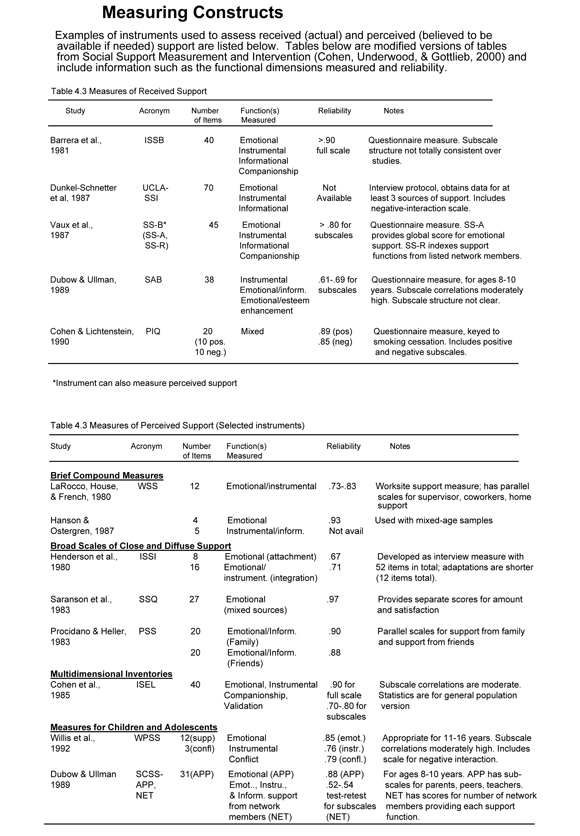The purpose of some investigations is to explore how different types of social support that are provided by network members impact health. There has been widespread interest in social support. This section provides some examples of instruments used to measure different dimensions of social support.
The most commonly measured dimensions of social support include:
Emotional support
Instrumental support
Informational support

Important considerations include:
- Assessing perceived support vs. received support
- Deciding which dimensions should be assessed given the sources of support and health topic under investigation (Such decisions can be made based on theory, findings from the research literature, or knowledge of the health topic).
Selecting the most appropriate instrument for a particular population and research question can be difficult. Answering the following questions during the design phase may make the selection process easier:
- What supportive functions are relevant for this population?
- Should I measure received support as well as perceived support?
- How long a measure do I need (number of items)?
- Should I use a composite score or separate scale scores?
- Should I include measures of unsupportive interactions as well as support?
- Should I assess support from specific network members?
- Should I measure both availability and satisfaction with support?
- Will I need to adapt the measure for a specific population or stressor?
- Will I need to adapt the measure for an intervention study?
Source: Cohen, S., Underwood, L.G. & Gottlieb, B. (2000). Social Support Measurement and Intervention. Oxford University Press: NY.
Future Direction:
- Explore the impact of different sources of support (i.e. healthcare provider vs. peers) not just different types of support.
- Identify determinants of perceived support. If perceived support is in fact related to positive health outcomes, it may be beneficial to understand how the perception of support can be improved.
- Relationships may not be exclusively positive or negative. Future investigations may consider the simultaneous measurement of both types of interactions from the same source.
